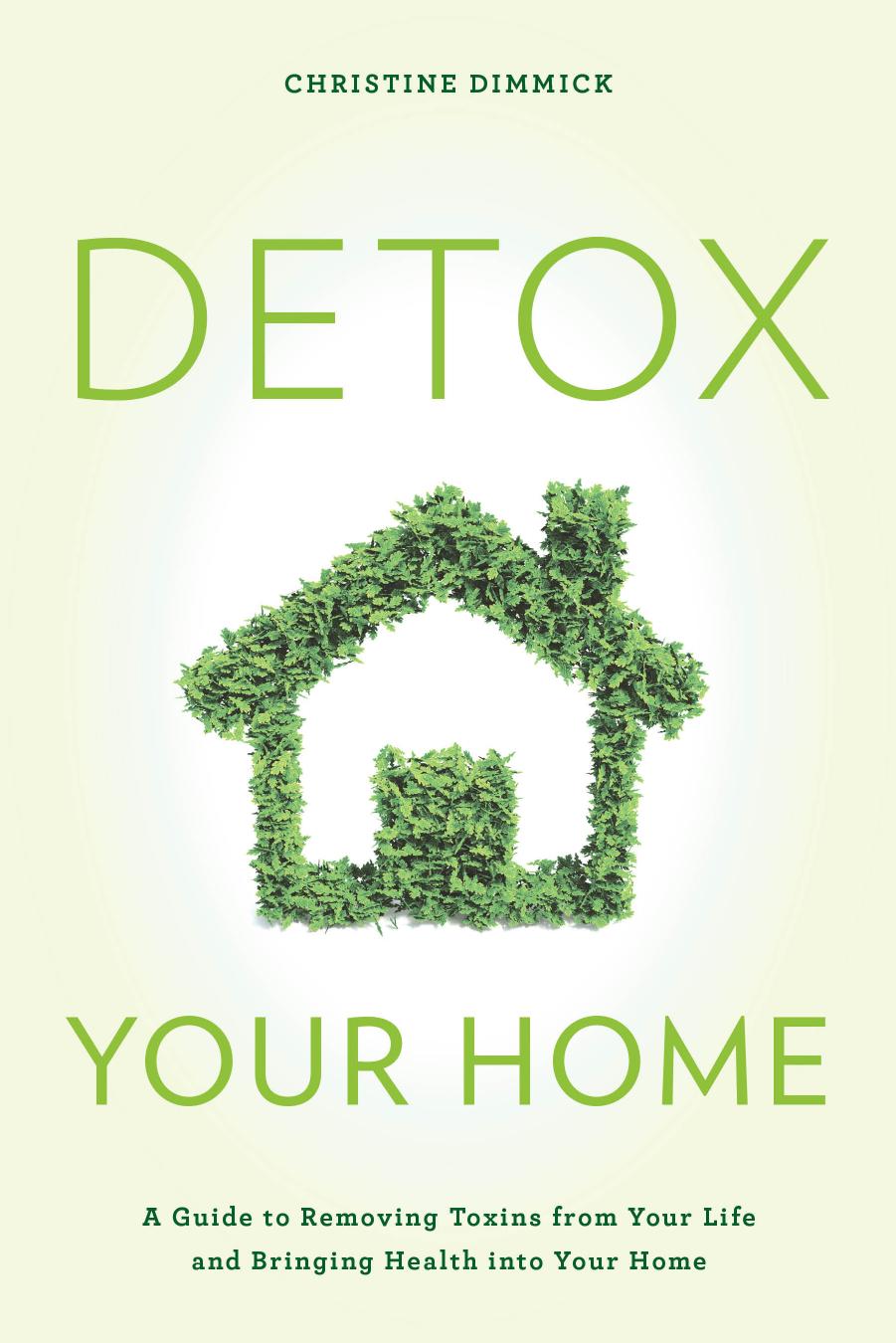Detox Your Home by Christine Dimmick

Author:Christine Dimmick
Language: eng
Format: epub, pdf
Publisher: Rowman & Littlefield Publishers
Published: 2018-03-03T16:04:59+00:00
The other 45 percent of bottled water is tap water that companies fill in bottles and sell back to you. True story. Brands like Aquafina® and Dasani® (Pepsi), treat regular tap water and bottle it up to sell to you.11
Because this is all coming from our tap water and natural resources, the same contaminants are in there, too; you are just paying for them to be packaged in a plastic bottle. A study by the Environmental Working Group found that out of the ten bottled-water brands tested, thirty-seven chemicals were found, including coliform bacteria, caffeine, the pain reliever acetaminophen, fertilizer, solvents, plastic-making chemicals, and the radioactive element strontium. I tested a bottled water from a local drugstore, and it came up positive for pesticides. Bottled water is not necessarily safer.
Another issue is the plastic the water is sitting in. Most plastics, including water bottles, contain BPAs and phthalates that leach into our water. Phthalates and BPAs are endocrine disruptors that affect our health in so many ways: our weight, hormones, and sexual function, including conception. Our tap water is monitored for phthalates, and they are allowed in limited amounts. They should be removed in my opinion; however, bottled water isn’t even monitored. According to the NRDC, “the bottled-water industry waged a successful campaign opposing the FDA proposal to set a legal limit for these chemicals.” This means the water you are buying and that you think is healthier could actually be supplying you with unhealthy amounts of BPAs, phthalates, and even pesticides with each sip. Heat also boosts the amount of BPAs and phthalates released. If that bottled water bottle is sitting in the sun or stored in a warm warehouse (many are) or a hot car trunk, that is like food for phthalate and BPA productions. Most plastic bottled anything—water, soda, juice—is not free of BPA or phthalate, nor are the plastic cups and glasses you buy to use outdoors or by the pool. And many of the products claiming to be BPA free are not free of BPAs at all.
The government knows this; they even produce reports like this.12 Every plastic has some chemical in it leaching in our water. A list of chemicals can be found in the article “The Truth about Plastic Water Bottles.”13
Polyethylene terephthalate (PETE or PET). It is used for most water and soda bottles. The ingredients include resins made from methane, xylene, and ethylene combined with the chemical ethylene glycol and other chemicals. These have flame retardants and UV stabilizers added.
High-density polyethylene (HDPE). It is used for milk and water jugs and opaque food bottles. Resins made from ethylene and propylene resins and have flame retardants added. When burned these release formaldehyde and dioxin if chlorine was used during manufacturing.
Polyvinyl chloride (PVC or V). It is used in some cling wrap, soft beverage bottles, plastic containers, plumbing pipes, children’s toys, vinyl windows, shower curtains, shades and blinds, and many other items. It creates toxic by-products when burned such as PCBs and dioxins. It is made from petroleum resins and has flame retardants added.
Download
This site does not store any files on its server. We only index and link to content provided by other sites. Please contact the content providers to delete copyright contents if any and email us, we'll remove relevant links or contents immediately.
Compact Houses by Gerald Rowan(2064)
Food Storage for Self-Sufficiency and Survival by Angela Paskett(1985)
Backyard Chickens Beyond the Basics by Pam Freeman(1902)
Lagom by Niki Brantmark(1673)
100 Skills You'll Need for the End of the World (as We Know It) by Ana Maria Spagna(1665)
The Unsettlers by Mark Sundeen(1641)
The Magickal Family by Monica Crosson(1634)
Pure Charcuterie: The Craft & Poetry of Curing Meat at Home by Meredith Leigh(1607)
Living Off the Grid by David Black(1591)
Mother Earth News Almanac by Mother Earth News(1497)
The Backyard Homestead Guide to Raising Farm Animals: Choose the Best Breeds for Small-Space Farming, Produce Your Own Grass-Fed Meat, Gather Fresh ... Rabbits, Goats, Sheep, Pigs, Cattle, & Bees by Gail Damerow(1440)
A Life Less Throwaway by Tara Button(1439)
Backyard Foraging by Ellen Zachos(1358)
The Backyard Homestead Seasonal Planner by Ann Larkin Hansen(1351)
The Sustainable Asian House by Paul McGillick(1350)
Fruit Trees, Berries & Nuts by Kim Pezza(1333)
Building Today's Green Home: Practical, Cost-Effective and Eco-Responsible Homebuilding (Popular Woodworking) by Smith Art(1259)
Life Without Plastic by Chantal Plamondon & Jay Sinha(1245)
Making Transparent Soap by Catherine Failor(1229)
